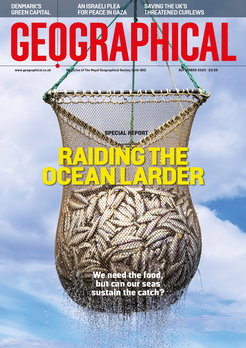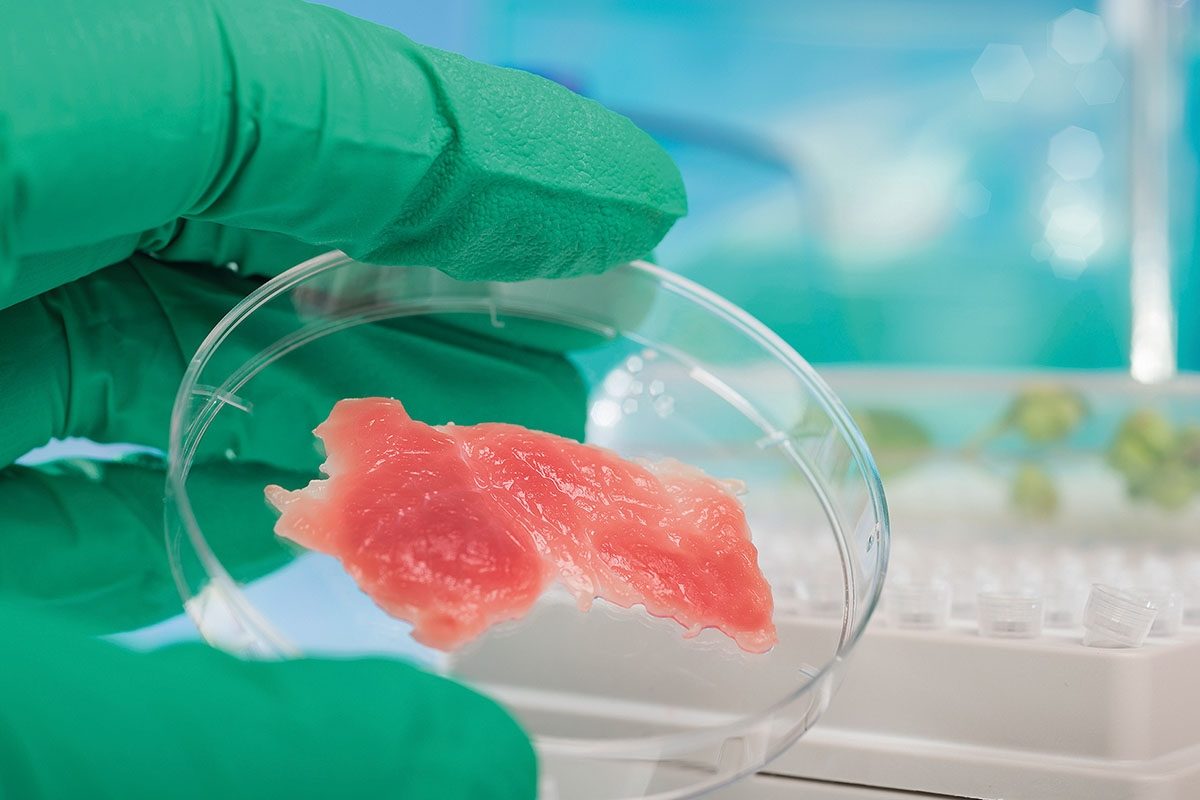
A rapid change in eating habits is necessary to avoid climate catastrophe. What solutions are being proposed, and will governments make them a reality?
By Harriet Constable
On 29 November 2006, an authoritative study called Livestock’s Long Shadow arrived on the screens and desks of policymakers, campaigners and journalists across the world. Released by the Food and Agriculture Organization of the UN, the first of its kind report provided alarming news. It detailed how the world’s livestock sector was a major contributor to greenhouse gas emissions, producing more than all the planes, trains, buses and cars across the globe. It told us that the expansion of livestock production was a key factor in deforestation and detailed how livestock production accounted for a whopping 70 per cent of all agricultural land and 30 per cent of the total land surface of the planet. The report concluded that livestock was ‘one of the most significant contributors to the most serious environmental problems, at every scale from local to global.’ In other words: the way were eating was unsustainable and we needed to adapt, fast.
Twelve years passed, more reports came out, nothing hugely changed. Then, on 8 October 2018, the International Panel on Climate Change released a Special Report, written by 91 experts from across 40 countries. It concluded that limiting global warming to 1.5°C is vital to mitigate against the worst effects of extreme weather, sea level rise and generally making the world uninhabitable for humans. To achieve this, the report called on the world to cut emissions in just 12 years.
A few days later, another major report, this time by the World Wide Fund for Nature, which showed that our vast and growing consumption of unsustainable foods and other resources has wiped out 60 per cent of all animals on Earth in less than 50 years.
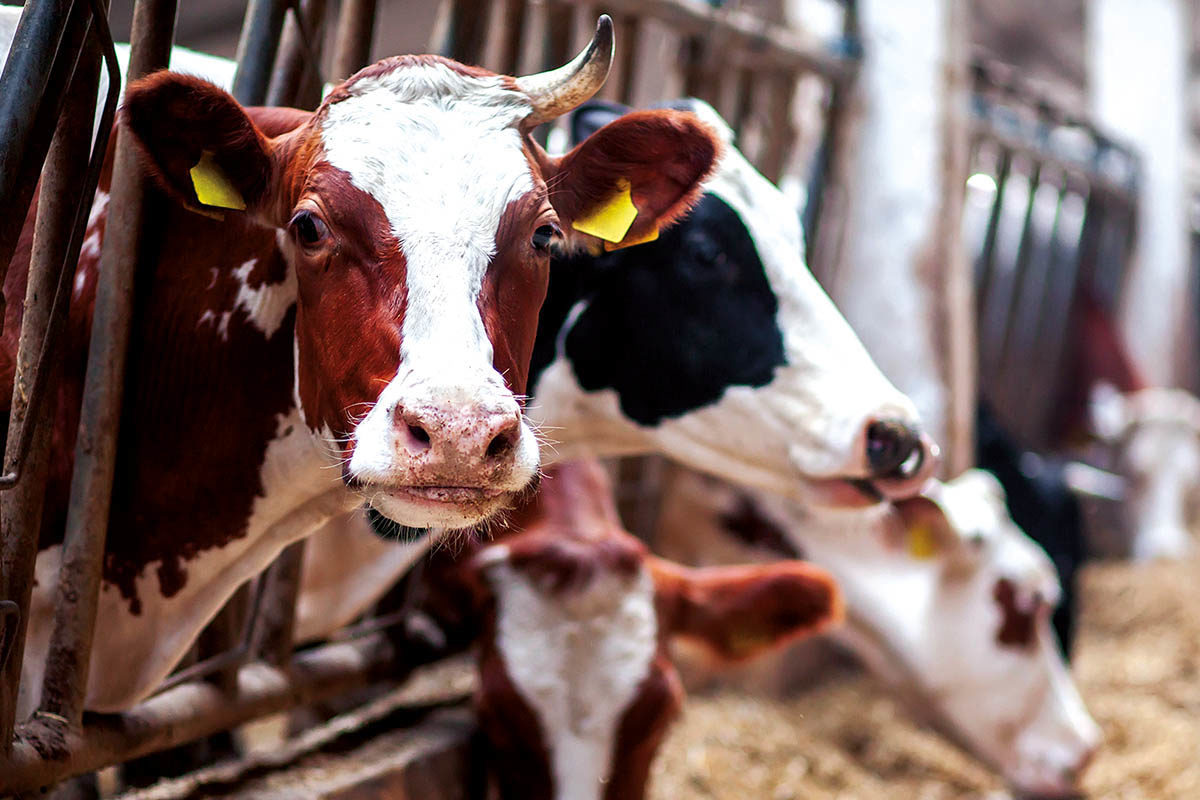
More reports followed. We learned that animal agriculture isn’t the only issue: our narrow eating habits are too. For example, of the more than 30,000 edible plant species, humans eat just 150. That’s less than one per cent of the food crops available to us, with disease and loss of biodiversity the knock-on effects.
By January 2019 the first ever science-based diet was published to tackle the world’s climate catastrophe and help people eat healthy, nutritious diets at the same time. The report, titled The Eat-Lancet Commission on Healthy Diets in Sustainable Food Systems, showed that the West’s high consumption of animal products – particularly red meat but also dairy and eggs – is fuelling global warming, destroying wildlife and polluting rivers and oceans. A shift to plant-based foods was recommended to prevent the collapse of the natural world and to feed our rapidly growing population that is estimated to reach ten billion people by 2050.
Time and again, thousands of scientists and researchers from across the globe have told us that our global food system is broken, and that our intensive farming and unsustainable, narrow eating habits are destroying the world’s biodiversity, warming up the planet and making it untenable not just for human life but for all living species on Earth.
Yet despite this onslaught of landmark reports identifying a crisis so large it brings into question the future of humanity itself, the Amazon is burning to clear trees for soy to feed cows, and the US and the EU governments are still providing billions in subsidies every year to animal agriculture and crop systems that prioritise yield over biodiversity, plant and planet health.

Subscribe to our monthly print magazine!
Subscribe to Geographical today for just £38 a year. Our monthly print magazine is packed full of cutting-edge stories and stunning photography, perfect for anyone fascinated by the world, its landscapes, people and cultures. From climate change and the environment, to scientific developments and global health, we cover a huge range of topics that span the globe. Plus, every issue includes book recommendations, infographics, maps and more!
Needless to say, figuring out a sustainable, secure and fair food system for our planet has become one of the most defining issues of our time. To implement changes in every aspect of the food system from how it is grown and processed to consumed and wasted, political collaboration and government vision would be needed on a massive scale. With so many new pieces of information out there about how our food needs to change, what might the future of food actually look like, and how far are governments in the US and Europe going to implement the rapid changes we’re told are needed?
Transformative change
The good news is that with the need for transformative change comes possibility and opportunity, and solutions for how to feed ten billion people by 2050 without continuing to wreck the planet abound. One of which started in the Netherlands.
In 2013, Dutch professor Mark Post was live on TV from a London studio, munching on a hamburger he and his colleagues had grown in a laboratory at Maastricht University. It was the world’s first example of ‘cultured’ or ‘cell-based’ meat – animal flesh grown from cells without ever needing to raise or kill said animal.
The snag at the time was cost: Post’s hamburger came in at an eye-watering $325,000. However, despite the absence of industrial-scale production, the cost would come down dramatically in the years following. As author and broadcaster Aaron Bastani points out in his optimistic manifesto, Fully Automated Luxury Communism, ‘just three years later US-based Memphis Meats produced the first cultured meatball for $1,000 [and] a year earlier Post had already claimed the process he initially pioneered could produce beef in a laboratory for $80 a kilo, meaning that a burger using cultured meat could cost as little as $12 – a more than 99 per cent fall in cost from just four years earlier.’
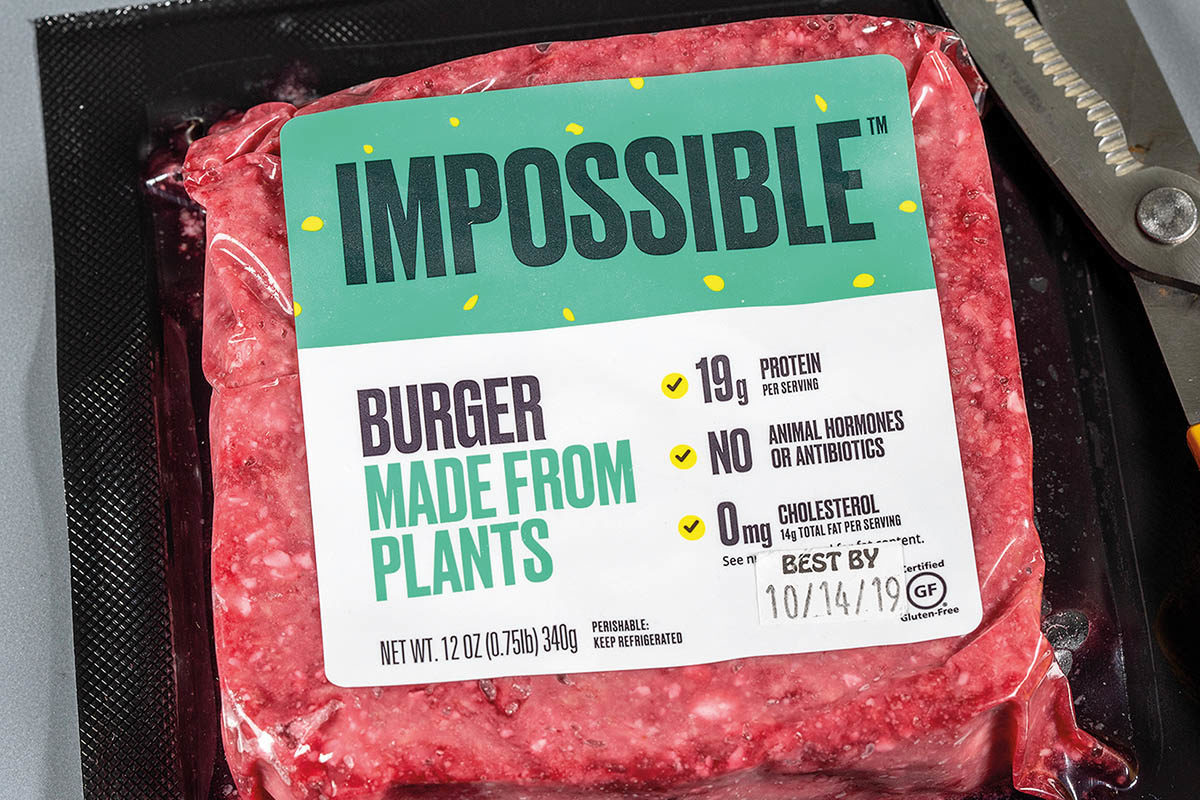
More than 40 companies creating cell-based meats have popped up worldwide since that TV interview, receiving millions of dollars in venture-backed funding to bring their cultivated fish, pigs, chickens and cows to market. Other ventures, such as Danish firm Solar Foods, are experimenting with an adaptable form of soil bacteria fed on hydrogen split from water by electricity that produces a protein ‘flour’ that can be used to create everything from animal feed to bread, pasta, ice cream and even lauric and omega-3 acids (the former being seen as a replacement for environmentally damaging palm oils).
Speaking to media across the globe, the founders of these organisations say these ‘farm-free’ approaches (as described by writer and environmentalist George Monbiot) are such powerful solutions that once things such as cultured meat hits the mainstream it will be as revolutionary a shift in public thinking as when cars replaced horses. But how might this alternative meat compare to traditional livestock farming from an environmental perspective? A 2011 report carried out by scientists at the University of Oxford and the University of Amsterdam concluded that ‘cultured meat’ would generate up to 96 per cent lower greenhouse gas emissions than conventionally produced meat.’ Companies are now also looking to replicate this work for the cultured dairy and egg industries.
Another solution presented in place of the intensive and destructive livestock industries are plant-based foods such as the Impossible Burger, which tastes and even ‘bleeds’ like meat but is made from wheat and potato protein. The Impossible Burger is now being sold at Burger King across the US, marking its official move from token menu addition in high-end restaurants to the mainstream. Competitor Beyond Meat labels itself as ‘the future of protein’ and also makes plant-based burgers as well as mayonnaise, sausages and chicken strips. Bill Gates raved about them. Writing in a blog article after tasting them he said, ‘What I was experiencing was more than a clever meat substitute. It was a taste of the future of food.’
By way of emphasising the excitement about these industries, it’s worth mentioning that Beyond Meat experienced one of the most successful IPOs of 2019. Indeed, according to the Good Food Institute (GFI), a US non-profit that focuses on cultured meat and plant-based, environmentally friendly alternatives to animal products, plant-based meat, eggs and dairy has received $17.1bn dollars in investment to date, with $673m of that invested in 2018 alone. ‘There’s a whole universe of opportunities that could provide a benefit in plant-based meats,’ says Jessica Almy, GFI’s policy director. ‘It’s a whole world of research that we’ve only just begun to think about.’
Technical limitations
The future of how we buy and transport food could also change dramatically with the use of technology. ‘At present the average ingredient in an American meal travels 1,550 miles before consumption, while 70 per cent of a food’s final retail price comes from transportation, storage and handling,’ says Bastani. There are many ideas at play here, from 3D printed foods to radical improvements in urban farming to render the need to fly, ship and truck vegetables across the planet completely unnecessary.
But it’s not all high-profile, expensive future technologies such as meat grown in labs and plant burgers that bleed, as the 2019 Beacons of Hope report by the Global Alliance for the Future of Food points out. ‘Around the world myriad people and organisations are working toward sustainable food systems and seeking transformative change,’ the report states, giving examples of biodiversity restoration through sustainable agriculture in Egypt and dismantling the control of multinational fertiliser and pesticide companies in the Philippines by teaching farmers to breed their own local rice varieties.
Stay connected with the Geographical newsletter!
In these turbulent times, we’re committed to telling expansive stories from across the globe, highlighting the everyday lives of normal but extraordinary people. Stay informed and engaged with Geographical.
Get Geographical’s latest news delivered straight to your inbox every Friday!
If so many solutions exist, and they’re popular and proving to be successful, why isn’t change more widespread? According to Joe Fassler, features editor of New Food Economy, a non-profit newsroom that solely reports on how and what citizens in the US eat, the appetite to improve our food systems exists, it’s implementation that’s the problem: ‘I think there’s great interest in shifting away from a system that prioritises yield and production above all else and moving toward a system that prioritises economic and environmental sustainability resiliency as much as it does output. However, there are serious policy and infrastructure hurdles in the way of that becoming a reality.’
One such issue is funding for development. ‘One of the major barriers to having a robust and diverse food system is the lack of research,’ says Almy at GFI. Where government money is being spent on agriculture, it tends to be on subsidies which serve one purpose: keeping the cost of intensive meat and crop production cheap and plentiful. According to the Environmental Working Group, an American research and activist organisation, each year the US government provides $13bn in subsidies for factory-farmed meat and intensive crop operations that produce just six harvests: corn, wheat, soybeans, cotton, rice, and peanuts: the majority of which is then fed to livestock. In the EU, €39bn was spent on subsidies in 2010, over 40 per cent of the EU budget. By comparison, investment in research and development for biodiversity-encouraging, sustainable crops, cell-based meat companies and plant-based proteins is next to none.
‘There are actually all of these policy roadblocks that are artificially keeping the status quo in place,’ says Fassler. For example, when farmers do try to make climate-friendly adjustments, ‘it can mess with [their] crop insurance and be financially impractical in ways that have to do way more with policy than the logistics of farming.’ Not only this, but Fassler’s team has reported on how academics who criticise factory farming or intensive crop operations or research alternative options face ‘a serious amount of intimidation and even professional repercussions.’ Lack of funding and research is not the only issue here – meat and dairy industries are some of the most powerful on the planet, and across the globe efforts to block the progress of future food systems is common.
An example comes from the states of Missouri, Arkansas and Mississippi, where laws have recently been introduced that block plant-based meat companies from labelling their products as ‘sausages’, ‘burgers’ or anything traditionally related to meat, even if they are preceded by words like ‘veggie’ or ‘vegan’. Almy and GFI argue these laws are a form of censorship. ‘[They] are intended to favour the conventional meat industry,’ she says. ‘What’s really going on is the law-makers are seeking to protect ranchers and other producers in their state from the competition.’
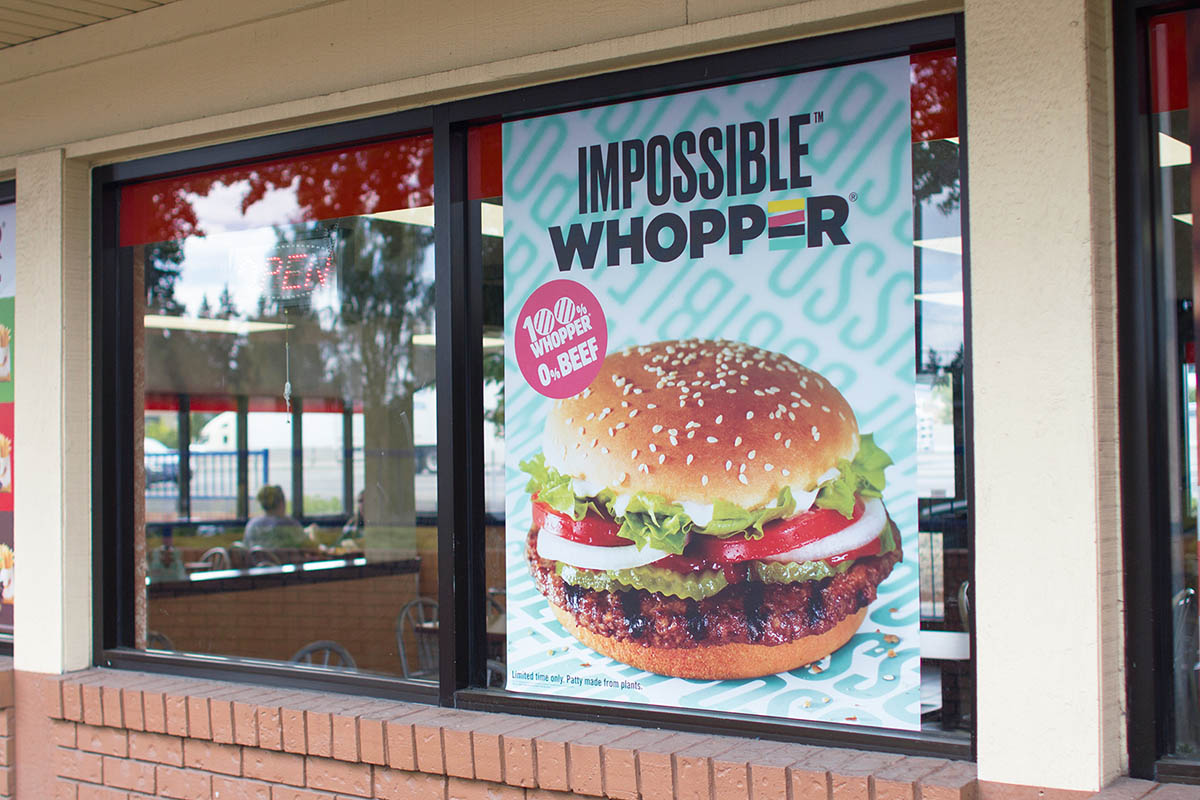
The animal agriculture and intensive crop farming lobbies clearly have a powerful hand over government decisions. One of Trump’s biggest funders in his election campaign was Ronald M Cameron, CEO of US poultry company Mountaire Corp, while the world’s biggest seed company – agrochemical giant Monsanto – helped fund his inauguration. In the UK, Boris Johnson’s campaign manager, James Wharton, is an employee of the lobbying giant Hume Brophy, whose major clients include Meat and Livestock Australia, one of the country’s leading marketing and research companies for the meat industry.
Few examples exist of government supporting future food institutions with significant funding for research and development, but where they do the results can be profound. For example, Almy explains that ‘our Department of Agriculture funded research at the University of Missouri that centred around plant proteins. That served as the basis of the technology that Beyond Meat has been using in its product.’ Support from government on this foundational research went on to guide the whole cell-based industry in the US and helped turn Beyond Meat into a successful commercial venture. ‘We’ve seen historically that public investment in R&D, particularly agricultural, pays for itself and then some with the growth that it creates. It doesn’t matter where you are on the political spectrum, investing in that way benefits the US economy and seeing US innovation and entrepreneurs succeed is exciting for most elected officials,’ says Almy.
Lauren Baker, one of the lead authors on the Beacons of Hope report, argues that the way to bring governments in is with a series of metrics, not only economic. ‘Some of the big costs for government are healthcare, environmental pollution and climate change. We need to think about the diversity of metrics that we need to tell the story with government,’ she says.
New food systems
Despite the huge dearth of funding and the active work undermining solutions, visions for what a future with a sustainable food system could look like are starting to emerge from leaders across the globe – notably in the US with the Green New Deal, and in the EU with the Green New Deal for Europe. These solutions call for the abandoning of intensive farming in place of diverse and varied crops, family farms and animal-protein alternatives, in a move that its promoters believe would create jobs, regenerate the economy and decarbonise the planet. And individuals are taking matters into their own hands, with the numbers of vegans and vegetarians rising dramatically in the West: in the UK The Vegan Society says the number of vegans has quadrupled since 2014, with 600,000 now across the country. It estimates that vegans and vegetarians are set to make up a quarter of the British population by 2025 and that ‘Flexitarians’, that is, those who eat primarily vegetarian and occasionally meat or fish, will make up half of UK consumers by the same period.
But it is systemic change, rather than individual action, that is overwhelmingly needed according to Fassler. ‘I don’t think [we] are going to shop [our] way to a healthier more resilient food system. If agriculture is going to make this shift away from yield being the only measure and to a system where financial and environmental sustainability are part of the equation, I think the laws and regulations we have in place are going to have to allow for that,’ he says.
With pressure mounting on governments in the West it’s easy to feel divided, but Almy is quick to point out a major commonality: ‘The US Department of Agriculture has said that its mission is to do right and feed everyone, and I think fundamentally that is exactly our mission as well,’ she says. In the coming years, it seems election cycles will prove fundamental in whether we mark the difference between realising a sustainable future of food or not.

Subscribe to our monthly print magazine!
Subscribe to Geographical today for just £38 a year. Our monthly print magazine is packed full of cutting-edge stories and stunning photography, perfect for anyone fascinated by the world, its landscapes, people and cultures. From climate change and the environment, to scientific developments and global health, we cover a huge range of topics that span the globe. Plus, every issue includes book recommendations, infographics, maps and more!

